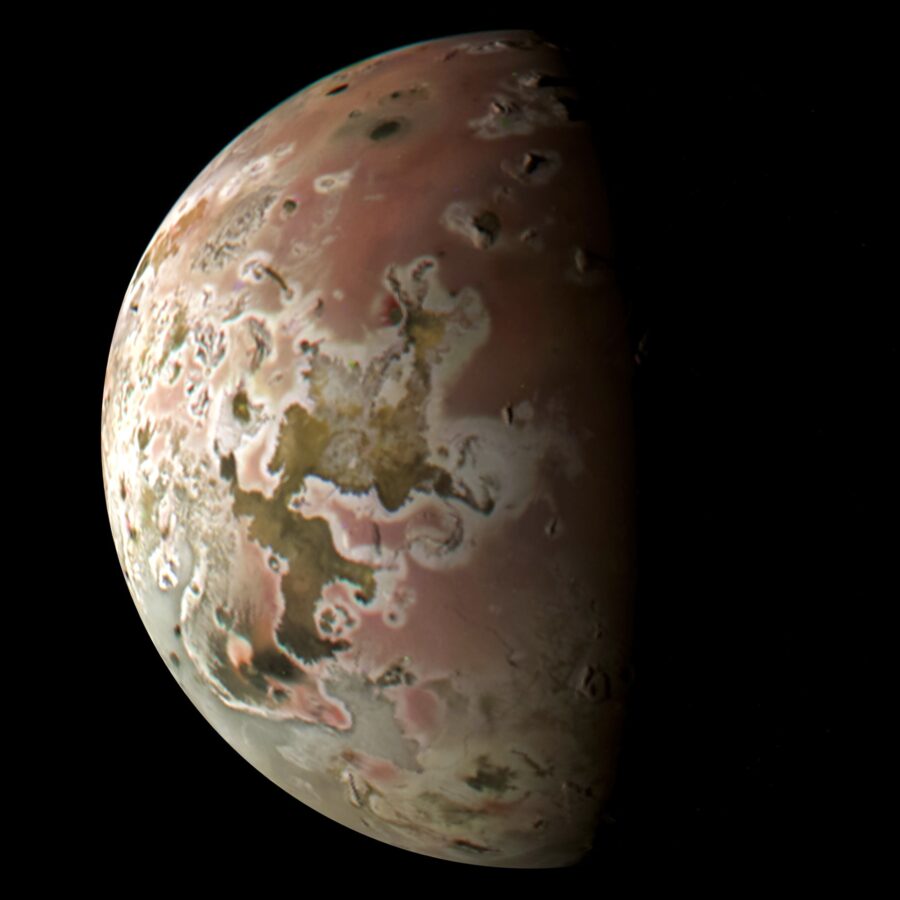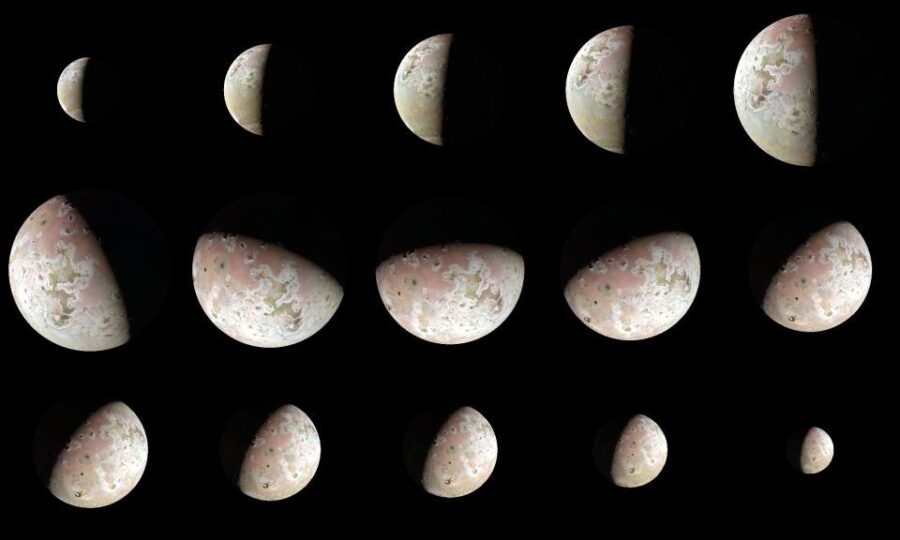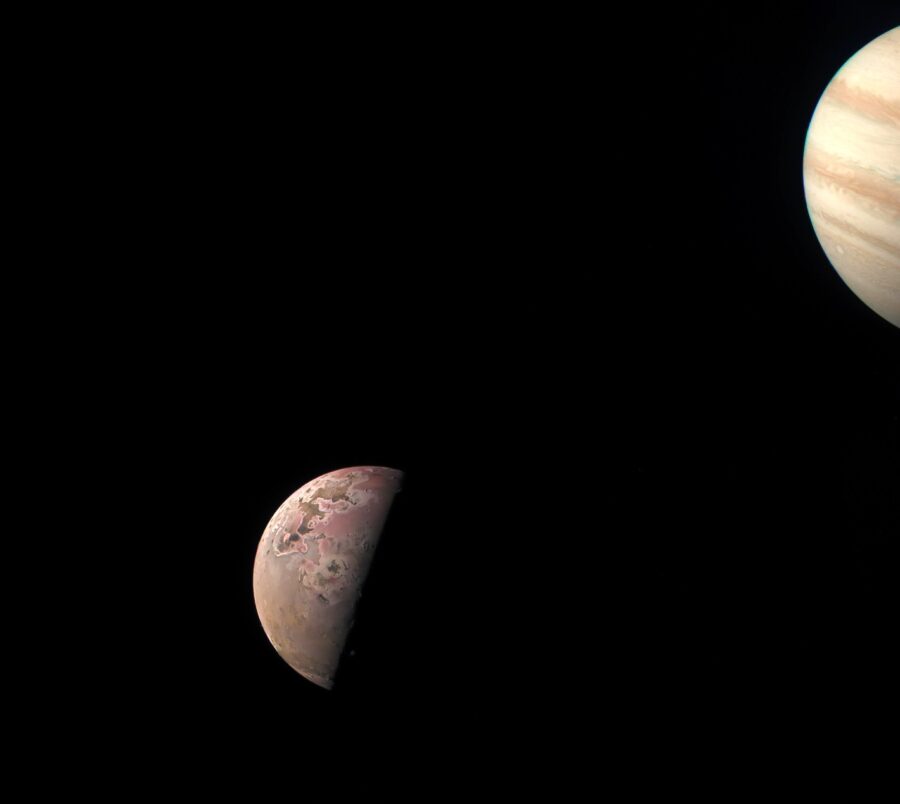The Most Volcanic World In Our Solar System Revealed In Stunning Photos
The real-world equivalent of Star Wars‘ Mustafar exists, and it’s in our solar system. According to Science Alert, NASA’s Juno probe recently captured new images of the most volcanically active body in the Milky Way, and they are spectacular. Io—one of the close to 100 moons that orbit Jupiter—is home to a bevy of volcanos, all erupting at random intervals.
Scientists know of roughly 400 different volcanos on Io, and some were visibly erupting when the Juno probe took its pictures of the surface.

Juno was able to get as close as 7,260 miles from Io’s scarred, sulfurous surface when it passed by Jupiter’s moon on October 15. Scientists know of roughly 400 different volcanos on Io, and some were visibly erupting when the Juno probe took its pictures of the surface. The images were focused on the moon’s north pole region and captured volcanic plumes being spewed up into the atmosphere by some of the volcanos there.
Io’s mostly volcanic surface has resulted in actual lakes of lava, visible in infrared images of the moon.
Scientists have declared the images “the best and clearest” view of Io since the Jupiter probe Galileo studied the planet and its various moons between 1995 and 2003.”Images such as these will provide Io research with plenty of analysis work for years to come,” said Jason Perry of the University of Arizona. Perry was a part of the earlier Galileo mission and processed the raw images taken by the current Juno probe.

Io just might be the most interesting moon in Jupiter’s orbit. While the innermost Jovian moon isn’t much bigger than Earth’s moon, its surface is overflowing with volcanos. Io’s mostly volcanic surface has resulted in actual lakes of lava, visible in infrared images of the moon. In short, Io is dealing with more active volcanos than 1997 Hollywood—a joke that only works if you’re old enough to remember the year both Dante’s Peak and Volcano with Tommy Lee Jones battled it out at the box office.
“Images such as these will provide Io research with plenty of analysis work for years to come.”
Jason Perry, University of Arizona
References to forgotten blockbusters aside, there is actually a very interesting reason behind all of Io’s volcanic activity. Io orbits Jupiter in an ellipse, meaning that Jupiter’s gravitational pull on the moon warps it slightly as it goes around.
Meanwhile, a trio of other moons in Jupiter’s orbit—Callisto, Europa, and Ganymede—are also tugging at Io, creating friction inside the moon, melting its internal contents, and forcing them to shoot out all over the surface.

This, in turn, causes a constant stream of sulfur dioxide to spew out of Io, which is then ripped out of the moon’s orbit by Jupiter. Now, in Jupiter’s orbit, the gas forms a torus of plasma that then gets constantly jerked around and sped up along the planet’s magnetic field lines. Once the plasma reaches Jupiter’s poles, it cascades down into the planet’s atmosphere and mixes with other materials there to create a permanent ultraviolet aurora.
The aurora generated by Io’s gasses coalescing with Jupiter’s atmosphere isn’t visible to the naked eye, but it’s still the most powerful aurora in the entire Milky Way.
Juno will continue to conduct flybys of Io and all the other moons of Jupiter—as well as Jupiter itself—throughout the coming months. On both December 30, 2023, and February 3, 2024, the probe will fly in closer to Io—about 930 miles from the surface of the moon—most likely resulting in some even more amazing images of Jupiter’s little spitfire.












